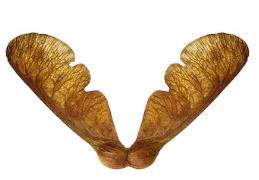
4 minute read
Life Sciences Category Suitable for SciFest@School Society of Irish Foresters Award
42. The Maths of Pine Cones
The main function of a pine cone is to keep a pine tree’s seeds safe. The cones can close their scales, or bracts, to protect the seeds from wind, low temperatures and even animals that might try to eat them. They open the bracts to release the seeds when it is warm, and conditions are suitable for germination. If you look very carefully at the arrangement of the bracts in a pine cone you will notice that they circle the pine cone in spirals. Did you know that the number of spirals found on a pine cone is almost always a Fibonacci number?
You might like to:
• Find out more about Fibonacci numbers and the golden ratio • Investigate the relationship between Fibonacci numbers and the bracts on pine cones
Further links: https://www.canr.msu.edu/news/fun_facts_about_pine_coneshttps://www.cfireland.ie/ https://faculty.math.illinois.edu/~delcour2/LessonPlanSunflowerWorksheets.pdf https://awkwardbotany.com/2019/12/25/pine-cones-and-the-fibonacci-sequence/ https://phys.org/news/2013-02-nature-pattern-fibonacci.html https://plus.maths.org/content/life-and-numbers-fibonacci
43. To Investigate Dispersal in Trees Possessing Winged Fruits, e.g. Sycamore and Ash
Seed dispersal is the mechanism by which a plant ensures that its seeds are scattered as far away from the parent plant as possible so that the seeds can colonise new territory. One of the ways plants disperse their seeds is by wind. Some trees produce seeds embedded in papery wings of varying structures to provide aerodynamic lift. Sycamore trees have distinctive helicopter seeds that fly on the wind. They twirl, float and spin through the air, crossing fields and mountains, hopefully landing somewhere where conditions are favourable for survival.
You might like to:
• Study seed dispersal in trees such as the ash and sycamore (Hint: Take 100 seeds. Paint them red. Release them from a height in various strengths of wind which you can measure with an anemometer.) • Collect sycamore seeds and study the factors that affect germination of the seeds by planting them in early February • Investigate the distribution of seeds around a tree • Seeds of some trees such as oak and horse chestnut have no special features that assist their dispersal by wind. Investigate if wind affects the direction in which these seeds are distributed or if they are just distributed evenly around the tree.
Further links: https://www.rhs.org.uk/advice/profile?pid=675 https://forest.jrc.ec.europa.eu/media/atlas/Acer_pseudoplatanus.pdf

There are around 20 forest parks in Ireland providing opportunities for people of all ages and walking abilities to escape from the stresses of modern life and to connect with nature. A number of studies have been carried out linking both physical and mental wellness to walking in forests. Studies have shown that being close to nature in a forest environment can improve physical fitness, reduce high blood pressure and obesity and help relieve symptoms of stress and depression.
You might like to:
• Investigate the footfall in a forest park near you • Carry out some research on forest walking and its effect on both physical and mental health • Identify and map out areas covered by forests in Ireland. Calculate the total land area covered by forests. Compare your findings to e.g. Finland. (Finland was named as the happiest country in the world by the 2019 World Happiness Report. This is the second year in a row which has seen Finland take number one place. 71% of total land area in Finland is forest area.)
Further links: https://www.coillte.ie/our-forests/public-goods/health-and-well-being/ https://ec.europa.eu/eurostat/web/products-eurostat-news/-/EDN-20180321-1

45. A Woodland Study
Forests are vital and not just for human life. Among other things they provide watershed protection, reduce global warming, provide habitats for animals, prevent soil erosion and are the source of many medicines not to mention chocolate! Conservation of our forests is one of the most important environmental issues we are facing today. Studying forests and understanding how human activities affect ecological processes within forests is essential in order to protect this invaluable resource.
You might like to:
• Investigate the properties of woodland soils (drainage and water retention, acidity and particle size) • Investigate how shade cast by trees affects the ground flora in a woodland • Investigating the characteristics of a population of trees (select e.g. oak trees or beech trees in a section of woodland) by recording size composition. This may be found by measuring the circumference (girth of the tree trunks at 1.3 m). Trees may be grouped according to their circumference and a histogram plotted. Are your results affected by the position of the tree within the woodland? • Investigate the link between deforestation and agriculture • Use satellite mapping resources to investigate the link between urbanisation, population growth and deforestation

Further links: https://www.societyofirishforesters.ie/ https://www.treecouncil.ie/ http://www.coillte.ie/ https://www.teagasc.ie/crops/forestry/advice/general-topics/environmental-benefits-of-farm-forestry/ http://www.woodlandsofireland.com/ https://www.pefc.org/what-we-do/why-forests-are-important/the-benefits-of-forests Top







